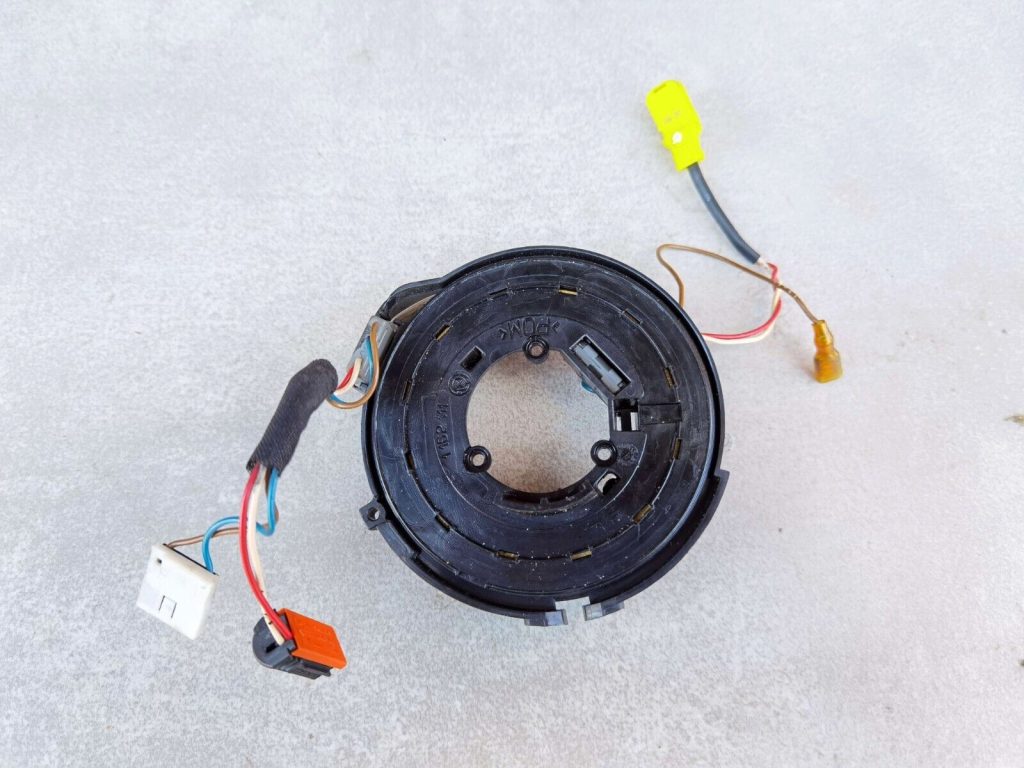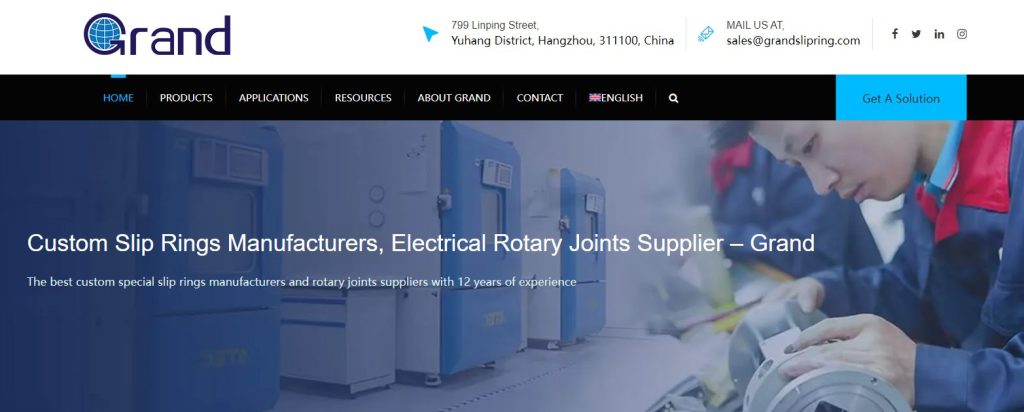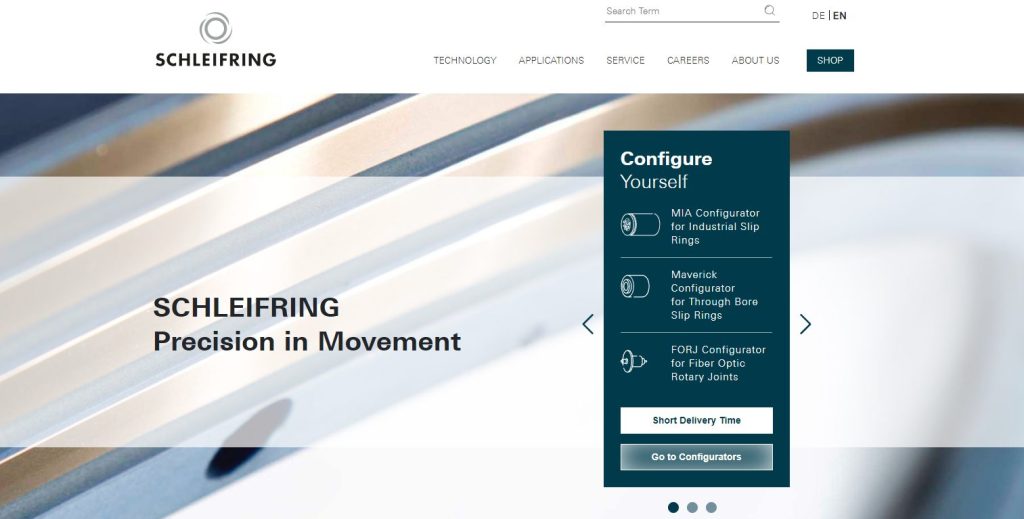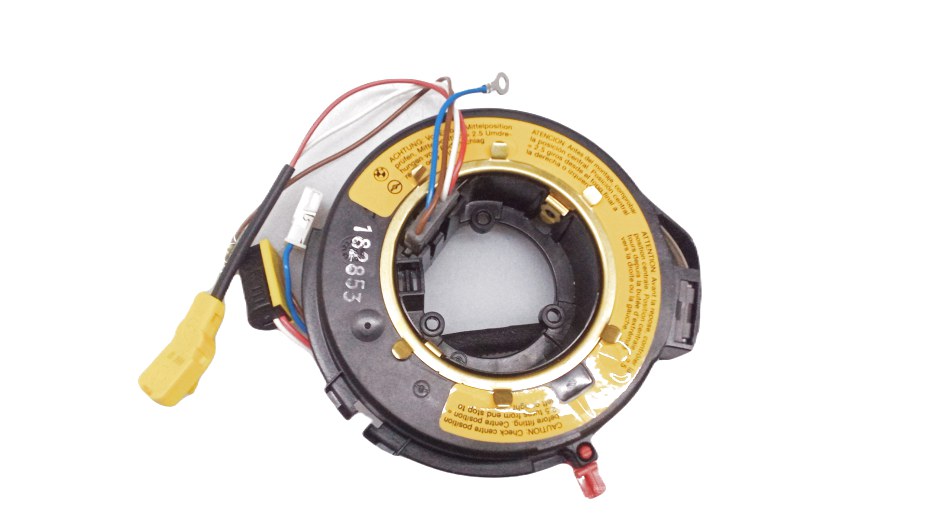The E36 slip ring, while not a commonly known component, plays a pivotal role in the proper functioning of numerous commonly used mechanisms. Essentially, the E36 slip ring is a highly sophisticated piece of technology designed to allow the transfer of electric power or signals from a fixed structure to a rotating device. Its principal role is enabling continuous rotational movement while avoiding the complications of traditional wired connections, like twisting or tangling.
The E36 slip ring finds its relevance and application in an array of equipment spanning several sectors. For instance, wind turbines, propelling the growth of renewable energy, rely on slip rings for the transfer of generated electricity from the rotating turbine blades to the stationary grid. It’s also vital in the rotary joints of transmission lines for radar antennae, allowing a free rotation of the antennae while transmitting data. Medical imaging devices like CT scanners employ slip rings to relay digital signals from the rotating X-ray emitter to stationary computers.
Simply put, without the humble E36 slip ring, many of our daily devices and high-tech equipment would fail to work as seamlessly as they do. The importance of its role cannot be understated; the E36 slip ring is indeed a techno-marvel nestled within our modern machinery, fueling functionality and advancement.
The Structural Design of E36 Slip Ring
The E36 slip ring, albeit compact in its construction, is a marvel of engineering design that has been meticulously developed to cater to the unique needs of signal and power transfer in rotating systems. It is intricately crafted with precision, featuring a design that allows for reliable and continuous transmission of electrical signals or power.
At the heart of the E36 slip ring lies its integral components – the ring and the brushes. The ring, a conductive circle, rotates with the machinery’s movement, carrying the electrical signals or power. The brush, typically made from graphite or metal, is a static component placed against the ring. As the ring spins, the brush maintains constant contact, thereby enabling the transmission of power or signals.
A key factor that further enhances the E36 slip ring structure is its incorporation of advanced contact materials and technology. This consideration helps ensure high conductivity, low electrical noise, and prolonged product lifespan, providing an exceptional performance edge. Several rings and brushes can be stacked together in a single slip ring assembly, allowing for multiple circuits to be connected.
In essence, the structural design of the E36 slip ring is a testament to the adroit blending of mechanical engineering and electrical technology – a synergy that underpins its crucial role in a myriad of applications. The unique design, paired with its high-end components, facilitates seamless operation and greater reliability, ensuring superior performance in varied contexts.

E36 Slip Ring: Functionality
The E36 slip ring operates based on simple yet highly effective principles of electricity and motion. The rotation of the ring, which is electrically charged, in conjunction with the stationary brushes that glide along the ring’s surface, serves as the basic premise of a slip ring’s function. The energy or signals fed into the ring are transmitted via the brushes, which maintain their position while the ring continues to rotate. This interaction allows energy or signal flow to be seamlessly transferred across the rotating interface without the need for wires that may twist or tangle.
The role of the E36 slip ring in the functioning of rotary joints is indispensable. In mechanical systems featuring components that need to rotate uninhibitedly while maintaining an electronic connection, a slip ring is the de facto solution. The E36 slip ring bridges the gap between stationary and rotating parts, providing a persistent electrical link that allows signals or currents to flow continuously, aiding the overall functioning of the system.
As for electrical connectors, the E36 slip ring plays the role of a dynamic, rotating electrical connector. Traditional electrical connectors are limited to providing static connections. However, the E36 slip ring offers a versatile solution, creating a rotating electrical connection that allows for constant data or power transfer, even as parts of the system move.
In relation to other components within a system, the E36 slip ring usually interfaces directly with static and rotating electrical components. This includes power sources, sensors, and actuators, among others on the stationary side, and motors, rotors, antennae, and more on the rotating side. The slip ring ensures that regardless of the system’s motion, the energy transfer between these components remains unhindered.
In sum, the functionality that an E36 slip ring offers is transformative in the context of complex electro-mechanical systems. Its ability to offer uninterrupted energy transfer in a rotating system overcomes critical limitations in traditional design and enables the possibility for more dynamic, efficient, and robust mechanical systems.
E36 Slip Ring: Installation Process
The installation of an E36 slip ring is a systematic procedure that necessitates keen attention. While the specific installation sequence might vary slightly based on the system in which the slip ring is being installed, a general guide can provide a useful framework for understanding the process.
Step 1: Unboxing and Pre-Installation Inspection
Begin by carefully unboxing the E36 slip ring. Inspection prior to installation is vital, ensuring the slip ring was not damaged during transit. Check the mechanical parts, cabling, brush alignment, and general intactness of the assembly.
Step 2: Preparing the Mounting Area
This involves cleaning and creating an appropriate space where the slip ring will be mounted. Depending on the system, you might need to remove certain components to access the mounting area.
Step 3: Mounting the Slip Ring
Attach the slip ring onto the mounting area, securing it as per the manufacturer’s instructions. This might involve bolting or otherwise fastening it to a part of the rotating system, ensuring it’s sturdy and well-positioned.
Step 4: Connecting the Cables
You then connect the stationary-side cabling to your power source, signals, sensors, or whatever static components that require power or data transfer. Similarly, connect the rotating-side cabling with the appropriate rotating components. Make sure connections are aligned according to electrical and signal requirements.
Step 5: Testing the Installation
Perform a functional test, initially under low power, before ramping up to full operational power. This allows you to confirm that electrical connections are correct and the slip ring is effectively transmitting power or signals.
During this process, a few issues might crop up:
- Proper alignment – The slip ring needs to be properly aligned with the rotating shaft and stationary interface. Misalignment can damage the slip ring and reduce its performance. Using a proper alignment tool or professional guidance can help address this issue.
- Pre-existing wear and damage – If replacing an old slip ring, there might be wear or damage in the system. This might interfere with the new installation and lead to unexpected problems. It is, therefore, crucial to thoroughly inspect and address such issues before installing a new slip ring.
- Complex connections – The integration of the slip ring into your system might be complex, especially on the electrical signal or power side of the installation. A thorough understanding of the electrical schematic of your system is crucial during the cabling connections.
By adhering to these steps and troubleshooting common issues, you can ensure a successful E36 slip ring installation. But remember – when in doubt, always refer to the manufacturer’s instructions or consult a professional.
E36 Slip Ring: Common Issues and Troubleshooting
Despite the E36 slip rings being optimally designed to provide seamless performance, some issues might still arise due to operational factors, manufacturing defects, or wear and tear. In this section, we address common problems encountered with E36 slip rings and suggest troubleshooting solutions and preventive measures.
A. Intermittent Signal or Power Loss
Causes
This issue can be attributed to worn-out brushes, oxidized rings, displacement of brushes, or loose connections.
Troubleshooting Solutions
- Inspect the brushes for wear and replace them if necessary.
- Clean oxidized rings using a recommended cleaning solvent and cloth.
- Check if the brushes are correctly positioned and seated against the contact surface of the rings.
- Assess the integrity of electrical connections, cables, and connectors.
Preventive Measures
- Establish and maintain a regular inspection and maintenance schedule.
- Ensure proper installation and alignment to minimize wear and tear.
B. Excessive Wear and Tear of Brushes or Rings
Causes
This can be attributed to misaligned slip rings, high system vibration, or inadequate lubrication.
Troubleshooting Solutions
- Realign the slip ring components and ensure proper assembly.
- Eliminate sources of excessive vibration and ensure the system operates within recommended limits.
- Apply the recommended lubricant and maintain a proper lubrication schedule.
Preventive Measures
- Adhere to manufacturer installation and alignment guidelines.
- Regularly assess system vibration and determine the root cause of excessive vibration if applicable.
C. Excessive Electrical Noise
Causes
Factors that may produce excessive electrical noise include oxidized rings, worn or improperly seated brushes, and the presence of debris between brushes and rings.
Troubleshooting Solutions
- Clean the rings as previously mentioned.
- Ensure that brushes are in good condition and correctly seated against the rings.
- Clean the slip ring assembly and remove any debris lodged between brushes and rings.
Preventive Measures
- Undertake regular inspection and maintenance.
- Keep the operating environment clean to reduce the chances of debris buildup.
D. Overheating and Thermal Issues
Causes
Excessive heat generation may stem from high friction between the brushes and rings, industrial heat sources, or electrical overloading.
Troubleshooting Solutions
- Inspect and replace brushes, if necessary, or apply a proper lubricant.
- Assess the surrounding environment for heat sources and consider shielding/insulation, if possible.
- Check for electrical overloading and adhere to the original system specifications.
Preventive Measures
- Maintain regular maintenance routines.
- Engineer component layouts that keep heat sources away from sensitive parts of the system.
By being proactive in addressing these common issues and adopting preventive measures, you can maximize the life span and performance of your E36 slip rings while ensuring smooth and uninterrupted operation within your system.
E36 Slip Ring Maintenance
Proper maintenance is one of the key factors in ensuring the optimal performance and longevity of E36 slip rings. In this section, we focus on tips that will contribute to the maintenance and extension of the lifespan of E36 slip rings, as well as the importance of regular inspection.
Tips on Maintaining and Increasing the Lifespan of E36 Slip Rings
- Lubrication – Applying the recommended lubricant to the slip rings regularly helps reduce friction between the brushes and rings, ultimately decreasing wear and tear. Be sure to use a lubricant specifically designated for slip rings to avoid any adverse performance effects.
- Regular Inspection – Periodic checks of slip rings, brushes, and connectors can help you detect potential issues early on, allowing for timely intervention. Inspect these components for signs of wear, oxidation, or loosening, and address any concerns as necessary.
- Alignment Checks – Ensuring proper alignment and positioning of the slip ring is crucial in preventing avoidable wear and tear. This involves assessing the stacking, brushes, and connections, and adjusting components as needed to maintain ideal functionality.
- Temperature Control – Heat can contribute to the degradation of slip ring components. Endeavor to maintain a stable operating environment and minimize exposure to external heat sources. This allows for sustained performance and an increased lifespan.
- Dust and Debris Management – Accumulation of dust and debris in and around the slip ring can affect contact between brushes and rings, potentially causing mechanical or electrical issues. Use appropriate dust covers or cleaning protocols to keep the system clean and prevent disruptions.
Importance of Regular Inspection
Regular inspection is a critical part of maintaining E36 slip rings for several reasons:
- Early Detection of Wear and Tear – Identifying worn-out parts in a timely manner can prevent sudden failure and downtime in your system. Early replacement and repair of such parts ensure continuous operation.
- Electrical Integrity – Inspections ensure that electrical connections remain intact and can help identify any signal or power issues. Prompt troubleshooting enables the resolution of these problems before they significantly impact system performance.
- Preventive Maintenance – Being attentive to potential issues increases the likelihood of catching minor concerns early on, enabling more straightforward and cost-effective solutions before a substantial issue arises.
In summary, the proper maintenance of E36 slip rings is crucial to ensuring the seamless functioning and longevity of the components within an electro-mechanical system. Adhering to the tips provided, and recognizing the importance of regular inspection, can contribute to preserving smooth operation by minimizing disruptions and promoting optimal performance.
Buying Guides: E36 Slip Rings
Selecting the right E36 slip ring for your system is crucial to ensure seamless operation and longevity. In this section, we discuss essential factors to consider when purchasing an E36 slip ring and compare various manufacturers to guide you in making an informed decision.
Things to Consider When Buying E36 Slip Rings
- Application-specific requirements – Evaluate the intended use of the slip ring within your system, considering required electrical ratings, number of channels, data rates, and transmission protocols (e.g., Ethernet, CAN-Bus, etc.), to choose a slip ring that aligns well with your needs.
- Environmental factors – Consider factors such as temperature range, exposure to dust or moisture, and vibration levels. Select a slip ring designed to tolerate your operating environment, perhaps with sealing, insulation, or other protective measures.
- Mounting Options – Assess the installation space and available mounting methods such as flange, through-bore, or compact designs. Choose a slip ring that is compatible with the physical constraints of your system.
- Maintenance and Reliability – Opt for a slip ring that requires minimal maintenance efforts and offers high reliability through aspects such as brushless designs or those with long-life brushes.
- Budget – Determine your budget limitation and ensure that you select a slip ring that not only meets your operational requirements but falls within your desired price range.
- Manufacturer Reputation and Warranty – Opt for slip ring manufacturers that have a proven track record and provide reliable after-sales support and warranty protection for their products.
Comparing Manufacturers
When seeking an E36 slip ring, it is vital to compare different manufacturers, examining aspects like product variety, reputation, support, and pricing.
Here is a brief comparison of three well-known slip ring manufacturers:
| No. | Manufacturer | Website |
|---|---|---|
| 1 | Hangzhou Grand Technology | https://www.grandslipring.com/ |
| 2 | Moog Inc. | https://www.moog.com/ |
| 3 | Stemmann-Technik | https://www.stemmann.com/en/home |
| 4 | Schleifring | https://www.schleifring.com/ |
Hangzhou Grand Technology

Hangzhou Grand Technology Co., Ltd. started as a special slip ring manufacturer in 2011. Grown into slip rings, rotary joints, and slip ring assembly experts of today with 6,000 square meter manufacture complex.
Obtained ISO9001, Rosh, CE, and GJB9001B certificates a number of slip rings, rotary joint patents, and proud of our products can meet military grade. Collaborated with universities, institutes, and renowned factories across Asia and Europe including Panasonic, SIEMENS, CSIC, SAMSUNG, HUAWEI, etc.
Moog Inc.

Moog is a leading supplier of high-performance slip rings for various industries, including aerospace. Among their offerings, Moog’s SR Series Slip Rings are designed for the demanding environments of helicopters, excelling in performance, reliability, and customization potential.
Stemmann-Technik

Stemmann-Technik, a part of the Conductix-Wampfler Group, offers a broad range of slip rings, including solutions for helicopters. Their Livietta Slip Ring Assemblies are designed explicitly for harsh and demanding environments in the aviation sector, providing reliable signal and power transmission.
Schleifring

Schleifring is a well-known manufacturer of electromechanical systems, including slip rings customized for various industries. Their Aircraft Slip Rings cater specifically to helicopters, offering robust performance, low wear, and high reliability to meet the challenges of aviation applications.
If you want to know more about other slip ring manufacturers, you can read Top 10 Slip Ring Manufacturers in China, Top 10 Slip Ring Manufacturers In the USA Market 2023, and Top 10 Slip Ring Industry Key Manufacturers 2023
In conclusion, taking into consideration both the operational requirements and the manufacturer’s reputation and support can significantly influence your decision-making process when selecting an E36 slip ring. Assessing your application, environment, mounting options, reliability requirements, and budget will guide you in choosing the most suitable slip ring and manufacturer for your specific needs.
Conclusion
In essence, the E36 slip ring is an underappreciated yet vital component in many mechanisms we interact with daily. Its function, design, installation, and maintenance are crucial aspects to consider for optimal performance. By addressing common issues and questions, users can make informed decisions about this essential component.
Remember, the key to effective use and longevity of an E36 slip ring lies not just in the purchase, but also in its proper maintenance.
FAQs about the E36 Slip Ring
Understanding the fundamentals of E36 slip rings, their functionality, usage, and maintenance, is critical for most users. In this section, we address some commonly asked questions and concerns related to E36 slip rings.
Q1. What is the purpose of an E36 slip ring in a system?
A: The E36 slip ring is a device designed to transmit electrical signals and/or power from a stationary part of a system to a rotating part. This allows for continuous operation without tangling or breaking connections, hence facilitating communication and energy supply between these components.
Q2. How to choose the right E36 slip ring?
A: The choice of a suitable slip ring depends on various factors such as your system’s operational requirements, the environmental condition it will operate in, the available mounting space, and your budget. It’s advisable to relay these specifications clearly to the manufacturer to get the most suitable slip ring for your needs.
Q3. How often should the slip rings be maintained or inspected?
A: The frequency of maintenance or inspection largely depends on the usage and operating environment of your system. However, as a general rule, conducting checks every 3 to 6 months is advisable under ordinary operating conditions.
Q4. Can E36 slip rings be custom-made?
A: Yes, most manufacturers offer customization options to meet the specific requirements of varied applications. This includes variance in the number of channels, transmission protocols, mounting methods, and electrical ratings, among other features.
Q5. What steps should be taken if an issue arises with the E36 slip ring?
A: Common issues like intermittent signal or power loss, excessive wear and tear, electrical noise, and thermal issues can be tackled by following appropriate troubleshooting steps. If the issue persists despite troubleshooting, it’s advisable to consult with the manufacturer’s technical support.
Q6. When should the slip rings or brushes be replaced?
A: The slip rings or brushes should be replaced when there is severe wear, persistent signal loss, increased thermal activity, or an observed drop in performance. Remember that preventive maintenance can extend the component’s life and improve the system’s efficiency.


